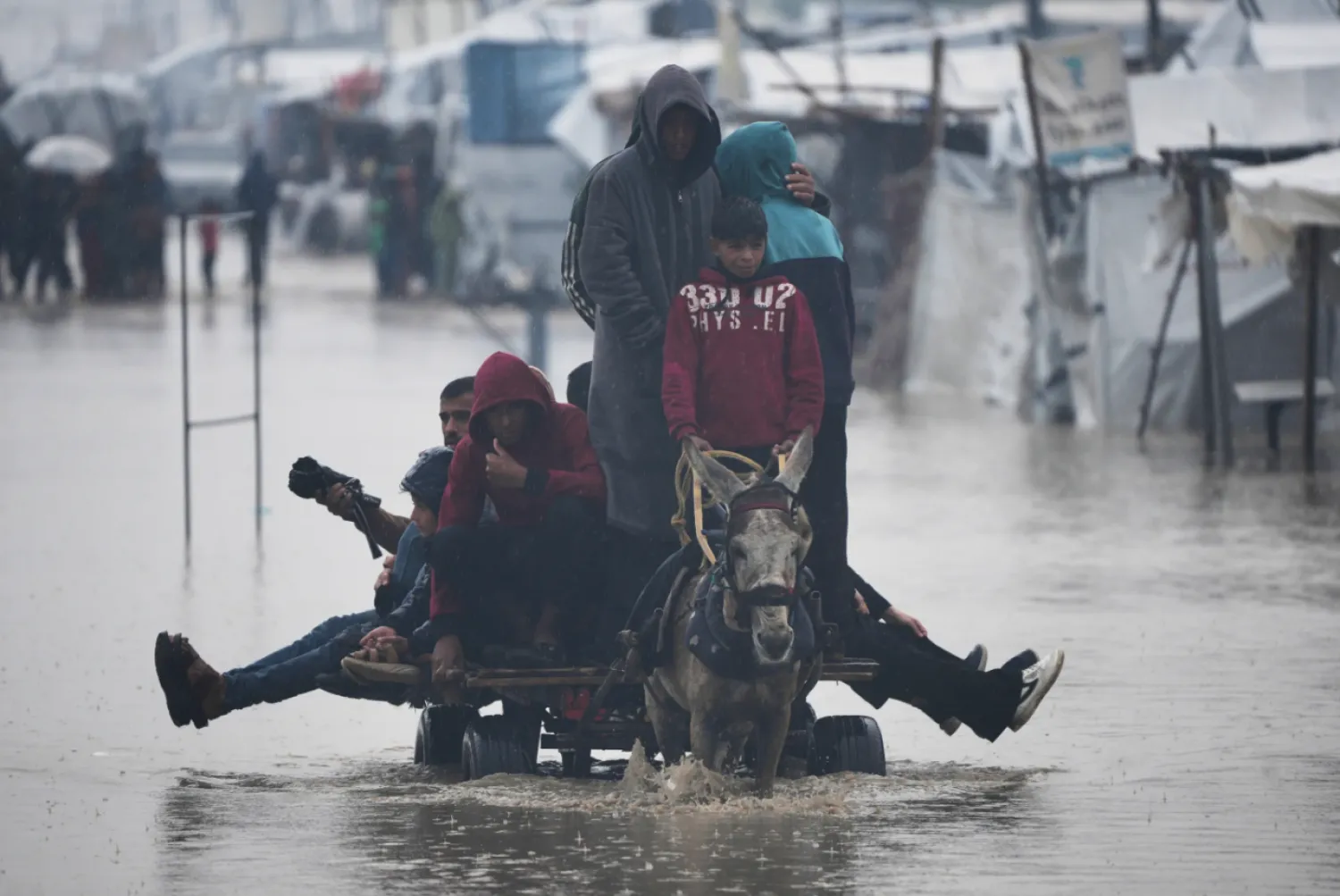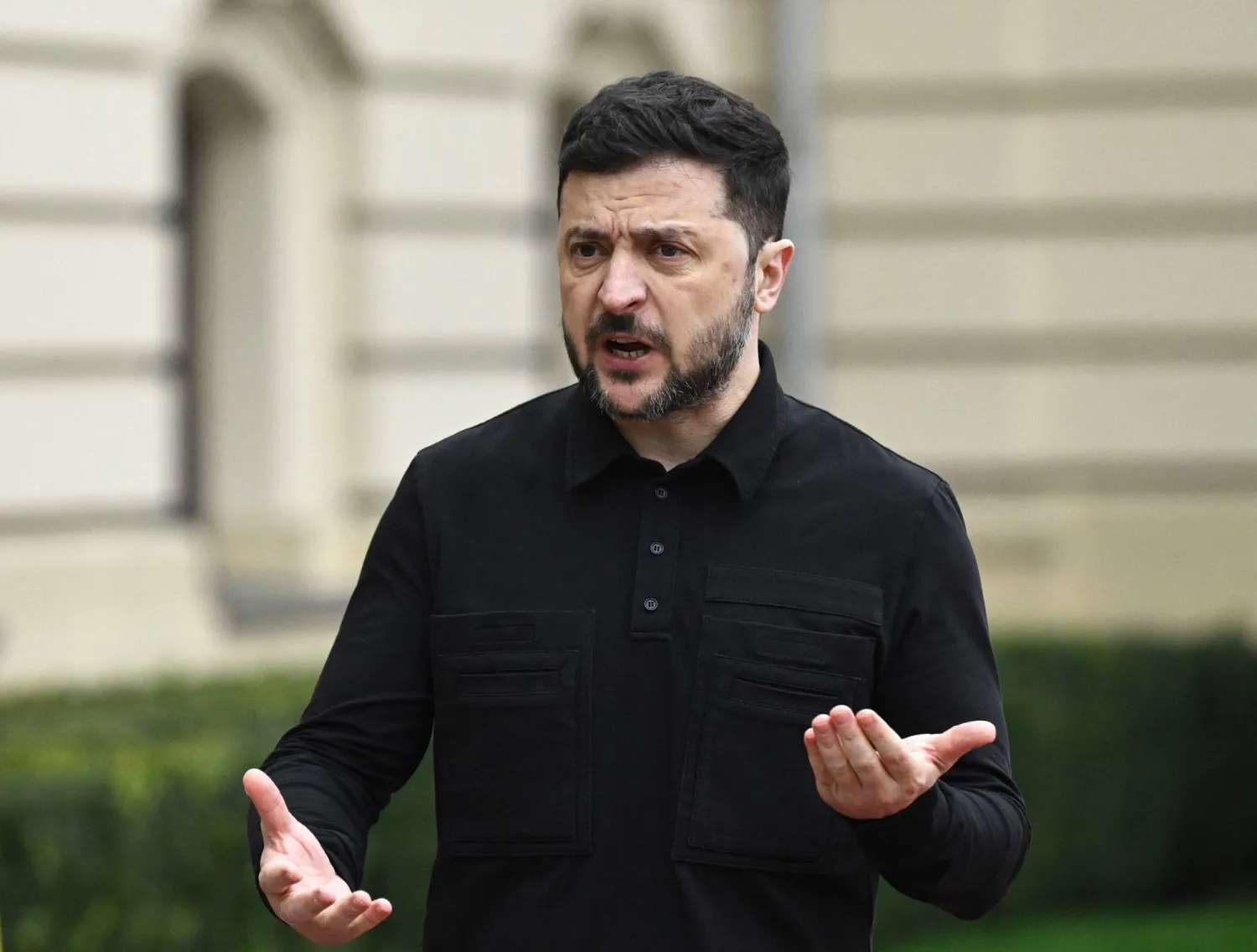Weeks after followers of influential cleric Moqtada al-Sadr stormed parliament, Iraq’s political crisis shows no signs of abating, despite rising public anger over a debilitating gridlock that has further weakened the country's caretaker government and its ability to provide basic services.
Iraq's two rival Shiite political camps remain locked in a zero-sum competition, and the lone voice potentially able to end the rift — the revered Grand Ayatollah Ali al-Sistani — has been conspicuously silent.
For now, hundreds of supporters of Sadr, a firebrand Shiite cleric, are still camped outside the legislative building in Baghdad, ready to escalate if their demands are not met.
Sadr has called for early elections, the dissolution of parliament and constitutional amendments. He has given the judiciary an end-of-the-week deadline to dissolve the legislature.
His Shiite rivals in the Iran-backed Coordination Framework have conditions of their own. They accused him of violating the constitution, prompting counter-protests that have spurred fears of bloodshed.
Neither faction seems willing to compromise to end the 10-month-old political crisis, the longest since the 2003 US invasion reset the political order. The caretaker Cabinet — unable to pass laws or issue a budget — grows more feeble by the day, while the public lashes out in protest against poor services, including power cuts during the scorching summer heat.
Uniting the warring factions
When Sadr commanded thousands of followers to storm Baghdad’s heavily fortified government zone on July 30, he paralyzed state institutions and prevented his political rivals from proceeding with the formation of a government.
Sadr might have felt emboldened by the silence of the 92-year-old al-Sistani, a revered spiritual figure whose word holds enormous sway among leaders and ordinary Iraqis.
Three officials at al-Sistani's seminary in the city of Najaf said he has not used his influence because he did not want to appear to take sides in the most acute internal Shiite crisis since 2003. They spoke on condition of anonymity because they were not authorized to brief the media.
"The Marjaiya is watching the situation with concern," said one of the officials, referring to al-Sistani. He said he "will not interfere at the present time. His entry may be perceived as benefiting one party over another."
Al-Sistani has seldom intervened in political matters, but when he has, it has altered the course of Iraqi politics.
In 2019, his sermon led to the resignation of then-Prime Minister Adil Abdul Mahdi amid mass anti-government protests, the largest in Iraq’s modern history. Mustafa al-Kadhimi’s administration was sworn in with the goal of holding early elections, which took place in October.
Al-Sistani has grown weary of current Iraqi political dynamics, the official in Najaf said. He has not resumed his usual Friday sermons, which were suspended during the pandemic. His doors remain closed to Iraq’s political elites, a sign that he disapproves of them.
The seminary in Najaf is also divided over Sadr. Some fear his audacity is deepening the Shiite divide, while others agree with his anti-corruption and reformist rhetoric. Dozens of students from the seminary recently joined the protests.
Al-Sistani does have red lines that, if crossed, would compel him to intervene, the officials said. They include bloodshed and attempts to erode what are seen as Iraq's democratic foundations.
"Moqtada knows these red lines and will not cross them," one official said, according to The Associated Press.
Searching for a way out of the crisis
Even if the Shiite rivals were to agree to hold elections, fundamental differences remain about electoral rules. There's no legal precedent to guide decision-makers.
Sadr has hinted he will escalate protests if the judiciary does not dissolve parliament by the end of the week. The judiciary says it does not have the power to disband the legislature.
His rivals in the Framework, made up of largely Iran-backed Shiite parties, claim Sadr's pressure on the judiciary is unconstitutional. They don’t object to new elections, provided there is a national consensus on how the vote will be conducted.
Such a consensus seems unattainable.
Sadr wants to use the same rules as in the October election, when Iraq was divided into 83 electoral districts. The current law benefits parties with a strong grassroots base like Sadr’s, who grew his seat tally from 54 to 73, while the Iran-backed parties saw a crushing decrease from 48 to 16.
The Framework wants the law to be amended. However, the parliament building is closed, with hundreds of Sadr’s followers camped outside preventing MPs from entering.
What the rest of Iraq thinks
Ordinary Iraqis are increasingly frustrated because the caretaker government is struggling to provide basic services, such as electricity and water.
The political crisis comes at a time of growing unemployment, particularly among young Iraqis. The country has endured consecutive droughts that severely damage agriculture and fisheries industries, further diminishing prospects for jobs.
Protests in southern Iraq turned violent last week after stone-throwing demonstrators clashed with security forces outside oil fields in the provinces of Missan and Dhi Qar. More than a dozen protesters were detained, and more than a dozen members of the security forces were injured.
In Missan, Mustafa Hashem protested against severe water shortages that damaged livelihoods in Iraq's marshes. He said the security forces engaged in "brutal and unjustified repression" against peaceful protesters.
More protests were held in the southern province of Basra after three straight days of power cuts during the peak summer heat. Protests are common during the summer in Iraq, when rising temperatures overwhelm the national grid, causing outages. This year, many demonstrators called for Sadr to champion their rights.
Salinity levels in Basra this summer are nearly the same as four years ago when tens of thousands of people were hospitalized because of poor water quality, said environmentalist Shukri al-Hassan. The 2018 health crisis spurred violent protests that served as the harbinger for mass anti-government rallies the following year.
Unable to pass a budget law, the caretaker government has resorted to stop-gap measures to fund urgent expenses such as food and electricity payments to neighboring countries. Meanwhile, crucial investments, including in water infrastructure, have been stalled.









